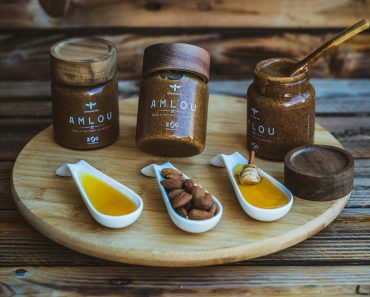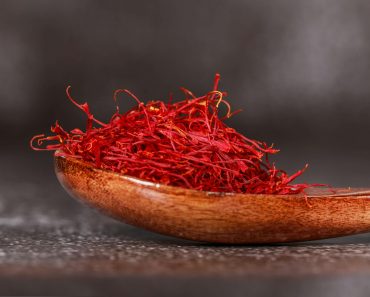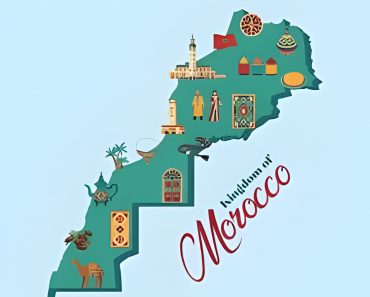the Delights of Kaab Ghazal : A Sweet Tradition

Kaab Ghazal
Moroccan cuisine is renowned for its rich flavors and intricate desserts, and among these culinary delights is the beloved Kaab Ghazal. This traditional pastry has a fascinating history and is a cherished part of Moroccan culture. In this article, we delve into the origins of Kaab Ghazal, the ingredients that make it unique, the art of preparing it, the occasions where it takes center stage, and the cities celebrated for their mastery in crafting this delectable treat.
1. A Brief History of Kaab Ghazal:
Kaab Ghazal, also known as Gazelle Horns, has a history steeped in Moroccan heritage. Its origins can be traced back to the medieval era when it was believed to have been introduced by Andalusian refugees fleeing Spain during the Reconquista. These refugees brought with them a treasure trove of culinary traditions, including the art of creating intricate pastries like Kaab Ghazal.
Over the centuries, Kaab Ghazal has evolved into a symbol of hospitality and celebration in Moroccan households. It is often served during special occasions such as weddings, Eid festivities, and family gatherings, showcasing its significance in Moroccan culinary culture.
2. Ingredients That Define Kaab Ghazal :
The essence of Kaab Ghazal lies in its carefully selected ingredients that blend together to create a symphony of flavors. The key components of this dessert include:
- Almond Paste: Ground almonds form the heart of Kaab Ghazal’s filling, providing a rich, nutty taste that complements the sweetness of the pastry.
- Sugar: A crucial ingredient for sweetness, sugar is added to the almond paste and also used to dust the finished pastries.
- Orange Blossom Water: This fragrant water adds a floral note to the filling, enhancing its aromatic profile and lending a refreshing touch.
- Cinnamon: A hint of cinnamon adds warmth and depth to the flavor profile of Kaab Ghazal, balancing the sweetness with a subtle spice.
- Butter or Clarified Butter: Used in the pastry dough, butter or clarified butter adds richness and helps achieve a flaky, tender texture.
These ingredients come together harmoniously, creating a filling that is both decadent and delightful.
3. How to Prepare Kaab Ghazal :

Kaab Ghazal
Preparing Kaab Ghazal is an art that requires patience and precision. Here’s a step-by-step guide to crafting this exquisite dessert:
Ingredients of Kaab Ghazal :
- Almond Paste
- Sugar
- Orange Blossom Water
- Cinnamon
- Butter or Clarified Butter
- Pastry Dough
Kaab Ghazal Instructions :
- Begin by preparing the almond paste. Combine ground almonds, sugar, a splash of orange blossom water, and a pinch of cinnamon in a bowl. Mix until you achieve a smooth, pliable consistency.
- Roll out the pastry dough and cut it into small circles or triangles, depending on your preference.
- Place a spoonful of the almond paste filling in the center of each dough piece.
- Fold the dough over the filling to create a crescent shape, resembling the horns of a gazelle.
- Seal the edges of the pastry by pressing them together with a fork, ensuring the filling remains intact.
- Arrange the filled pastries on a baking sheet lined with parchment paper.
- Brush each pastry with melted butter or clarified butter for a golden finish.
- Bake in a preheated oven until the pastries are golden brown and crisp.
- Allow the Kaab Ghazal to cool slightly before dusting them with powdered sugar.
- Serve and enjoy these delectable treats with a cup of mint tea or your favorite Moroccan beverage.
4. Occasions to Indulge in Kaab Ghazal:
Kaab Ghazal holds a special place in Moroccan culinary traditions and is often enjoyed during festive occasions and gatherings. Some of the notable events where Kaab Ghazal takes center stage include:
- Weddings: Kaab Ghazal is a staple at Moroccan weddings, symbolizing sweetness and prosperity for the newlyweds.
- Eid Celebrations: During Eid al-Fitr and Eid al-Adha, families come together to share delicious meals, with Kaab Ghazal being a cherished dessert on these festive days.
- Family Gatherings: Whether it’s a birthday celebration or a casual get-together, Kaab Ghazal adds a touch of elegance and sweetness to family gatherings.
The presence of Kaab Ghazal at these events reflects its significance as a dessert that brings joy and togetherness.
5. Cities Known for Kaab Ghazal:
While Kaab Ghazal is enjoyed throughout Morocco, certain cities are renowned for their expertise in crafting this delightful pastry:
- Fez: Known for its rich culinary heritage, Fez is celebrated for its traditional Kaab Ghazal recipes passed down through generations.
- Marrakech: A vibrant city known for its bustling souks, Marrakech offers a variety of Kaab Ghazal variations, each showcasing local flavors and techniques.
- Casablanca: As one of Morocco’s largest cities, Casablanca boasts a diverse culinary scene, with Kaab Ghazal being a beloved dessert found in many bakeries and pastry shops.
-

Kaab Ghazal
These cities not only preserve the tradition of Kaab Ghazal but also innovate with new flavors and presentations, keeping this dessert relevant and beloved by locals and visitors alike.
Moroccans often pair their beloved Kaab el Ghazal sweets with a delightful and traditional beverage known as mint tea, or “atay nana” in Moroccan Arabic. This refreshing tea is made from fresh mint leaves, green tea, sugar, and sometimes a hint of orange blossom water. The vibrant green color and invigorating aroma of the mint tea complement the rich flavors of the almond-filled pastries, creating a harmonious balance of sweetness and freshness. Sipping on a steaming cup of mint tea while indulging in Kaab el Ghazal is a cherished ritual that enhances the overall dining experience, making it a true celebration of Moroccan culinary artistry and hospitality.
Conclusion:
In conclusion, Kaab Ghazal embodies the essence of Moroccan hospitality and culinary artistry. Its history, rich ingredients, meticulous preparation, and association with joyous occasions make it a dessert steeped in tradition and flavor. Whether enjoyed in the bustling streets of Marrakech or at a family gathering in Fez, Kaab Ghazal continues to captivate taste buds and hearts, showcasing the enduring charm of Moroccan cuisine.
As you explore the delights of Kaab Ghazal, savor each bite and appreciate the centuries-old tradition that has made this dessert a beloved symbol of Moroccan culinary heritage.





